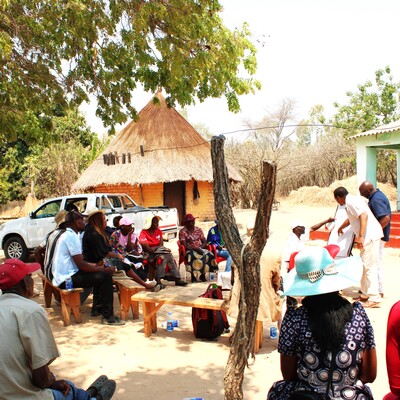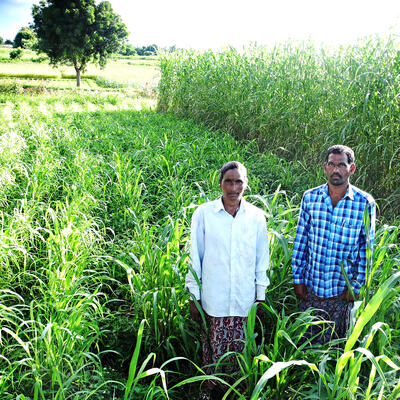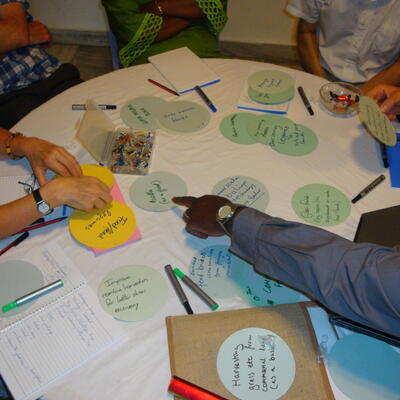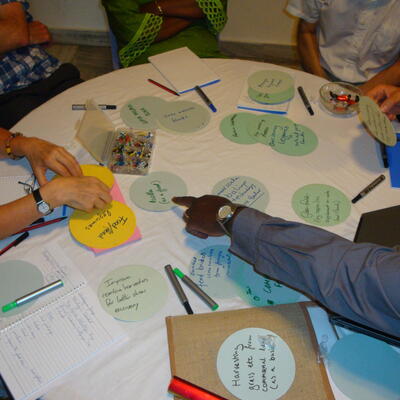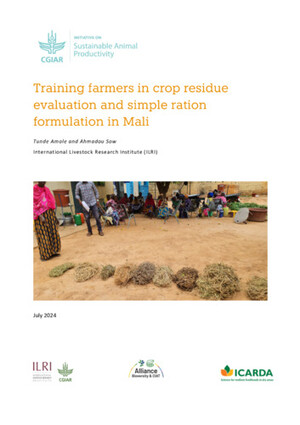
Atsbi decision makers exploring the future of their livestock value chain : You can’t have your sheep and eat it
 With the increasing population and wealth, demand for animal source food such as milk and meat is expected to almost double in the next 10 years in Ethiopia(Dolapo E., etal) . This is one of the greatest opportunities for improving livelihoods of Ethiopian livestock keepers and at the same time the biggest environmental threat, as livestock is resource intensive and an important source of greenhouse gas emissions.
With the increasing population and wealth, demand for animal source food such as milk and meat is expected to almost double in the next 10 years in Ethiopia(Dolapo E., etal) . This is one of the greatest opportunities for improving livelihoods of Ethiopian livestock keepers and at the same time the biggest environmental threat, as livestock is resource intensive and an important source of greenhouse gas emissions.
Developing sustainable livestock value chains requires understanding that there are only few synergies and many more trade-offs. You cannot have your cake and eat it. Policy makers need to understand that they will have to make some tough choices to reach a good outcome, with both winners and losers, rather than continuing with business as usual that will lead to a situation where everybody loses with low livestock production and overuse of natural resources.
The ReSLeSS project in Burkina Faso, Ethiopia and Tanzania, part of the SAIRLA programme funded by DfID, aims at creating a learning space where all decision makers in the value chain come together to learn about the tough choices that need to be made. From the farmer to the national policy level, passing through traders, experts and local government, all work together to develop a shared vision of what a good outcome for the livestock sector would be.
The learning space for the Atsbi value chain took place on the 10-11 October 2018 at the Capital Hotel in Wukro, Tigray, Ethiopia hosted by the Ethiopian Climate Research Centre (ECRC) of the Ethiopian Development Research Institute (EDRI). The learning was enabled with the Transformation Game, a game that lets participants select how many animals of each type they would like to have in the whole woreda in 2030. The types of animal included in the game are local breed dairy cows, fattening and rearing cattle, draft cattle, specialized dairy cows (cross-breeds) and sheep. Participants also select from two or three credible management options for each animal type. The resulting animal numbers and types from the game are entered into the CLEANED R tool, an environmental simulation tool that computes overall production, water use, greenhouse gas emissions and soil health from the specific choice of livestock numbers and management. Many different scenarios are run based on participants’ ideas. Advantages and disadvantages are discussed in mixed groups, allowing for a dialogue between farmers, traders, policy makers and experts. As discussions evolve, new scenarios are developed, simulated and evaluated on the spot until the group can find an agreement or compromise.
The visions developed by the mixed groups suggest that Atbsi should have fewer improved and well-fed cross-breed cows that produce more milk allowing to reduce greenhouse gases overall without compromising on the increased production. Particularly women are convinced that the increased milk production will empower them to have more decision-making power within their households. Mechanisation will make draft animals largely obsolete, except for the steeper slopes. This allows for an overall decrease in the number of local breed cattle. Yet this results in much less beef production for the area. The loss can be partially compensated by improved sheep production. The advantage of this option is that livelihoods of the poor and vulnerable population can be improved, as they generally keep sheep. Overall, better livestock practices for the area include the use of planted fodder and concentrates that are brought in from outside Atsbi. The use of concentrates reduces the pressure on local resources and particularly water, although planting fodder crops such as alfalfa will be at the cost of cereal crops.
Participants were excited to see all decision makers at the table and to discover that farmers are able to fully participate in developing locally relevant livestock development plans. Engaging in a dialogue in which each side gets to listen to the arguments of the others and negotiate some of the tough choices that need to be made in the livestock sector enabled decision makers to come up with more inclusive and sustainable visions for the livestock sector.
The CLEANED-R tool for Atsbi is available on request from Catherine Pfeifer: c.pfeifer@cgiar.org and will be released publicly later this year both on ILRI’s github (https://github.com/ilri/CLEANED-R ) and shiny account.
By Catherine Pfeifer (ILRI), Joanne Morris (SEI), Dawit Mulatu (ECRC)





